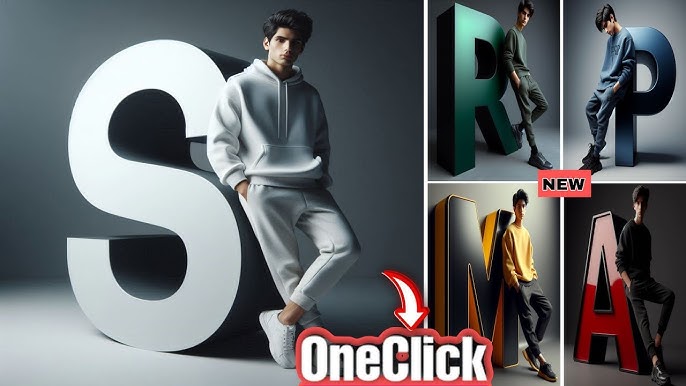Blast VFX Editing with AI: Revolutionizing Visual Effects for the Digital Age
In the ever-evolving world of digital filmmaking and content creation, visual effects (VFX) have become a critical component of storytelling. Whether it’s a superhero crashing through a wall, a spaceship igniting into hyperspace, or an explosion rocking a battlefield, these “blast” effects captivate audiences and elevate the cinematic experience. Today, the integration of artificial intelligence (AI) into VFX editing, particularly in creating and enhancing blast effects, is redefining the boundaries of what’s possible.
This post explores the dynamic world of blast VFX editing, how AI is transforming the industry, the tools making it all happen, and the implications for creators and audiences alike.
The Rise of Blast VFX in Film and Media
Explosive effects, often referred to as “blast VFX,” are among the most iconic and memorable visual elements in film and gaming. From war scenes in Saving Private Ryan to interstellar clashes in Star Wars, explosions are more than just spectacle—they contribute to narrative pacing, emotional impact, and visual immersion.
Traditionally, blast VFX required a combination of practical effects (on-set pyrotechnics) and meticulous digital compositing. Teams of artists would simulate fire, smoke, debris, light flashes, and shockwaves using software like Houdini, After Effects, or Maya, often spending weeks on a single sequence.
Today, AI is rapidly accelerating and refining this process, allowing for quicker turnaround, higher realism, and even real-time blast simulations.
How AI is Disrupting VFX Editing
Artificial Intelligence is making waves in almost every creative field, and VFX is no exception. AI algorithms are capable of analyzing vast datasets, recognizing patterns, and generating outputs that once required intensive human labor. Here’s how AI is specifically transforming blast VFX editing:
1. Procedural Generation of Explosions
AI-powered procedural generation allows artists to create realistic explosion sequences in seconds. By training models on thousands of real and simulated explosions, AI can generate unique blasts that include intricate details like flame tongues, debris trajectories, and volumetric smoke.
Tools like NVIDIA’s Omniverse and SideFX Houdini now integrate AI to automate blast simulations with physics-aware precision, reducing manual tweaking and increasing realism.
2. Style Transfer and Realism Enhancement
Much like AI tools that apply artistic styles to images, VFX artists can now use AI to “stylize” explosions—either by mimicking real footage or adapting a blast to fit a specific tone (e.g., gritty realism vs. stylized comic book). GANs (Generative Adversarial Networks) are particularly useful here, refining frames to add photorealistic lighting, motion blur, and secondary effects.
3. Automatic Rotoscoping and Masking
One of the most time-consuming tasks in VFX is isolating foreground elements so explosions or environmental effects can be composited behind or around them. AI-based rotoscoping tools, like Adobe’s Roto Brush 2 or Runway’s video segmentation tools, use machine learning to automate object tracking and masking. This saves artists hours of frame-by-frame manual labor.
4. Physics-Aware Simulations
AI algorithms can simulate blast physics more accurately by integrating real-world data. This includes pressure wave propagation, structural deformation, and dynamic debris motion. Instead of manually tweaking every parameter, artists can now use AI-assisted tools that simulate real-world outcomes based on scene inputs—such as proximity to objects, materials, and even sound.
AI Tools Powering Blast VFX Editing
A variety of powerful tools and platforms now incorporate AI for VFX editing. Here are some standout examples tailored to blast effects:
1. NVIDIA Omniverse
This real-time collaboration platform uses AI to simulate complex physics, including explosive events. Its integration with USD (Universal Scene Description) and RTX ray-tracing allows for hyper-realistic visuals, often generated in real time.
2. SideFX Houdini
While already a powerhouse for procedural effects, Houdini’s use of machine learning enables smarter fluid and smoke simulations. With its new machine-learning-based solvers, artists can create complex explosions faster, with built-in AI to suggest and refine parameters.
3. Runway ML
Runway brings AI video editing tools to the browser, democratizing access to sophisticated VFX. With features like green screen removal, object tracking, and AI-driven motion interpolation, creators can blend explosions into scenes without needing a traditional VFX pipeline.
4. EbSynth and DAIN
These AI tools enable frame interpolation and style transfer for VFX elements. For example, artists can draw a single frame of an explosion and use EbSynth to propagate the style across a sequence, while DAIN can generate in-between frames for smooth slow-motion effects.
AI vs. Traditional VFX Pipelines
Speed and Efficiency
Traditional VFX requires teams of specialists working on modeling, simulation, lighting, and compositing. AI dramatically reduces turnaround by automating repetitive or complex tasks. A simulation that might take hours to render can be completed in minutes using neural rendering techniques.
Cost-Effectiveness
AI democratizes VFX by reducing the need for expensive hardware and large teams. Indie filmmakers and small studios can now generate Hollywood-level blast effects using cloud-based tools or even smartphones equipped with AI-enhanced apps.
Creative Freedom
With less time spent on technical tweaking, artists can focus more on storytelling and creativity. AI suggestions and auto-corrections also help improve quality without requiring deep expertise.
However, it’s important to note that AI is a tool, not a replacement. The best results still come from human-AI collaboration, where artists guide and refine outputs generated by intelligent systems.
Case Studies: AI in Action
1. Netflix’s AI-Powered Production
Netflix has been experimenting with AI tools to streamline post-production, including VFX editing. In one sci-fi series, blast effects were enhanced using AI-based volumetric rendering, reducing production time by 40%. The AI engine adjusted flame behaviors and debris based on scene context.
2. Corridor Digital and AI Compositing
YouTube’s Corridor Crew showcased how AI could automate masking, explosion integration, and style matching. In a project titled AI vs. Human VFX Artist, they demonstrated how AI-generated explosions, while still needing human finesse, could hold up against traditional VFX pipelines in speed and quality.
3. Unreal Engine and MetaHuman
Although primarily for game development, Unreal Engine’s integration with MetaHuman and AI-based real-time rendering tools has opened doors for hyper-realistic explosions in live broadcasts and virtual production. This tech was used in Disney’s The Mandalorian, where AI-driven VFX created real-time blast effects on LED volumes.
Ethical and Creative Implications
As AI takes on more of the VFX workflow, several ethical and creative considerations emerge:
Authenticity and Artistic Control
There’s a concern that AI might dilute creative intent by standardizing effects. However, most current AI tools are customizable, requiring artistic input. Rather than replacing human vision, they serve as collaborators.
Job Displacement
Like many industries, the rise of AI in VFX raises concerns about job security. While some roles (e.g., junior rotoscopers) may be reduced, new opportunities are emerging in AI supervision, data curation, and creative direction.
Intellectual Property
When AI is trained on existing visual assets, questions arise about copyright. Studios need to ensure that AI-generated content doesn’t unintentionally plagiarize or infringe on protected work.
The Future of Blast VFX with AI
We’re only scratching the surface of what’s possible with AI in visual effects. Here are some predictions for the next decade:
1. Real-Time Interactive VFX
AI will enable dynamic VFX that respond to user interaction in games, VR, and live performances. Explosions will no longer be pre-rendered—they’ll be simulated in real time based on player actions.
2. Natural Language VFX Creation
Imagine telling your AI editor: “Create a fiery explosion in the background, with sparks flying toward the camera,” and seeing it appear instantly. With advancements in text-to-video and multimodal models, this is on the near horizon.
3. Personalized VFX Styles
AI will allow users to define custom explosion aesthetics—cartoonish, noir-style, photorealistic, vintage, etc.—without changing core simulation settings. This will unlock unique creative identities for filmmakers and brands.
Generate
Getting Started: A Guide for Aspiring VFX Artists
If you’re new to blast VFX or want to explore how AI can level up your editing, here’s a beginner-friendly roadmap:
-
Learn the Basics of VFX Editing: Tools like After Effects, Blender, and Houdini are essential. Understanding particle systems, compositing, and lighting is key.
-
Explore AI-Enhanced Tools:
-
Try Runway ML for quick compositing.
-
Use Kaiber or Pika for AI video generation.
-
Experiment with EbSynth for frame stylization.
-
-
Study Real Explosions: Observation is crucial. Use high-speed footage or physics simulations to understand how real-world explosions behave.
-
Join Communities: Engage with creators on platforms like Reddit (r/vfx), Discord VFX servers, or YouTube tutorials focusing on AI and VFX.
-
Experiment and Build a Reel: Practice with short clips, enter VFX challenges, and build a portfolio that showcases your AI-assisted creations.
Conclusion
Blast VFX editing has long been a domain requiring intense labor, vast resources, and specialized skills. But with the infusion of artificial intelligence, the



